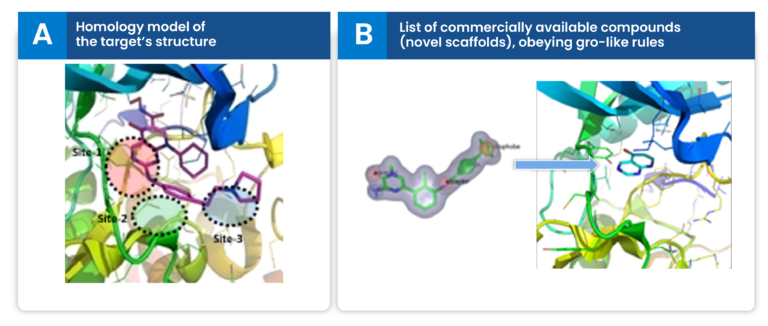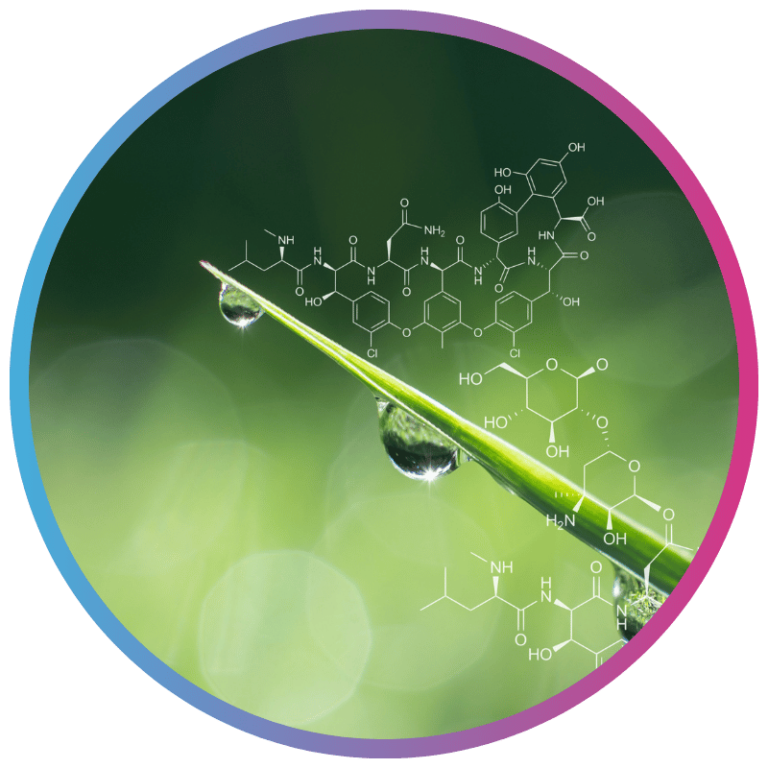Overview
This case study demonstrates Excelra’s computational biology and cheminformatics approach to identifying herbicidal compounds with novel scaffolds. By integrating pharmacophore modeling, homology modeling, and docking simulations, we supported the client in discovering structurally diverse leads for agrochemical development.
Our computational biology services enabled early hit identification and compound screening to address key limitations like unresolved target structures and active-site variability. Explore more of our computational biology offerings used in agrochemical innovation.

Our client
An APAC-based agrochemical company aiming to expand its product portfolio using data-driven cheminformatics and herbicide discovery workflows.

Client’s challenge
Lack of structural information: The target lacked resolved structural data, limiting conventional structure-based design.
Structural variability: The protein displayed active-site changes upon ligand binding, increasing the need for computational biology tools and flexible pharmacophore modeling.

Client’s goals
The client sought to discover and recommend compounds with novel scaffolds exhibiting herbicidal properties against a known target to enhance their agrochemical product portfolio. They required a workflow combining cheminformatics expertise and advanced pharmacophore modeling to overcome structural data gaps and optimize compound selection.
Our approach
To tackle these challenges, Excelra implemented a stepwise computational biology pipeline integrating cheminformatics, pharmacophore modeling, and structural simulations.
Screening of herbicides
- Sampled commercially available herbicides using cheminformatics filters.
- Shifted to a compound-centric strategy emphasizing novel scaffold identification and lead diversity.
Pharmacophore modeling & filtering
- Developed a common pharmacophore model targeting critical features for screening.
- Applied molecular weight and structural filters via cheminformatics tools to ensure agrochemical relevance.
Database exploration & candidate selection
- Explored chemical databases for scaffold diversity.
- Conducted pharmacophore modeling-based virtual screening to identify top candidates.
Structure modeling & docking analysis
- Built the protein model through homology modeling and refined it using molecular dynamics.
- Employed induced-fit docking to assess ligand binding patterns and optimize hits.
Prioritization & final compound selection
- Used statistical scoring and visual inspections to shortlist compounds.
- Recommended top-ranked candidates for experimental validation, based on insights from computational biology and cheminformatics workflows.
For related efforts, explore this compound activity landscape case study.


Conclusion
Accelerated compound screening: Leveraged pharmacophore modeling and cheminformatics tools to rapidly discover novel scaffolds, improving throughput and efficiency.
Informed decision-making: Used molecular dynamics and computational biology to capture target flexibility and guide prioritization.
Cost-Efficient optimization: Enabled robust, early-stage herbicide discovery with minimal trial-and-error through our cheminformatics pipeline.
Our approach showcases how integrating pharmacophore modeling with broader computational biology and cheminformatics strategies can transform early agrochemical R&D. Learn more about our cheminformatics expertise for scaffold optimization and target-based design.

